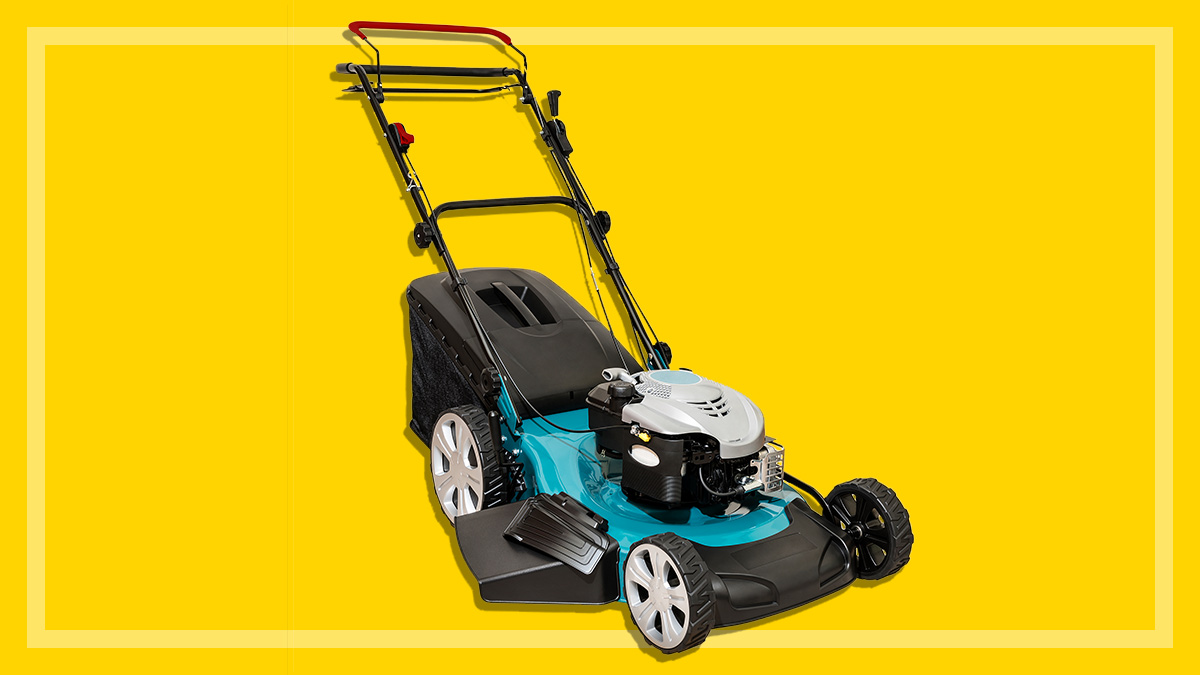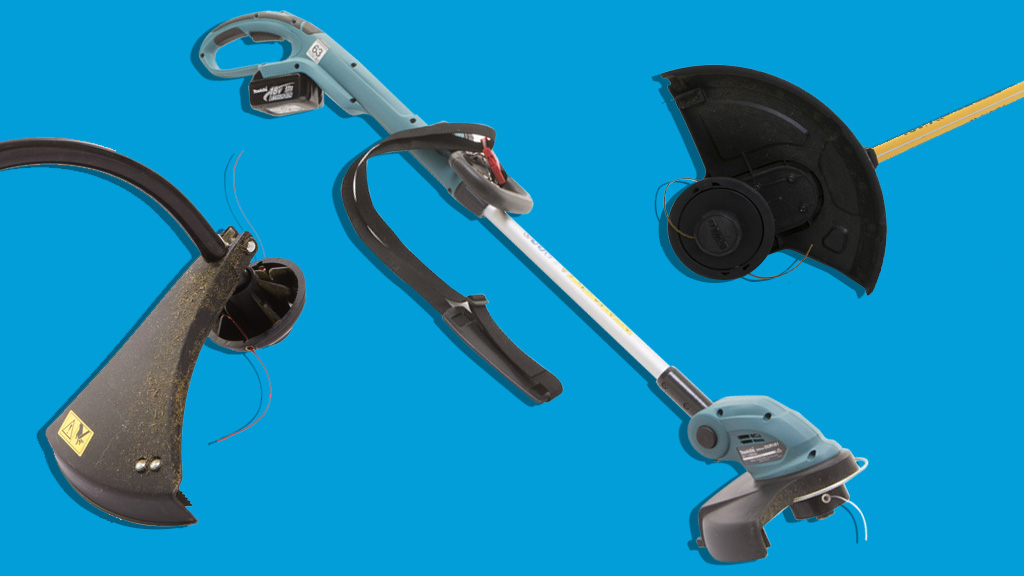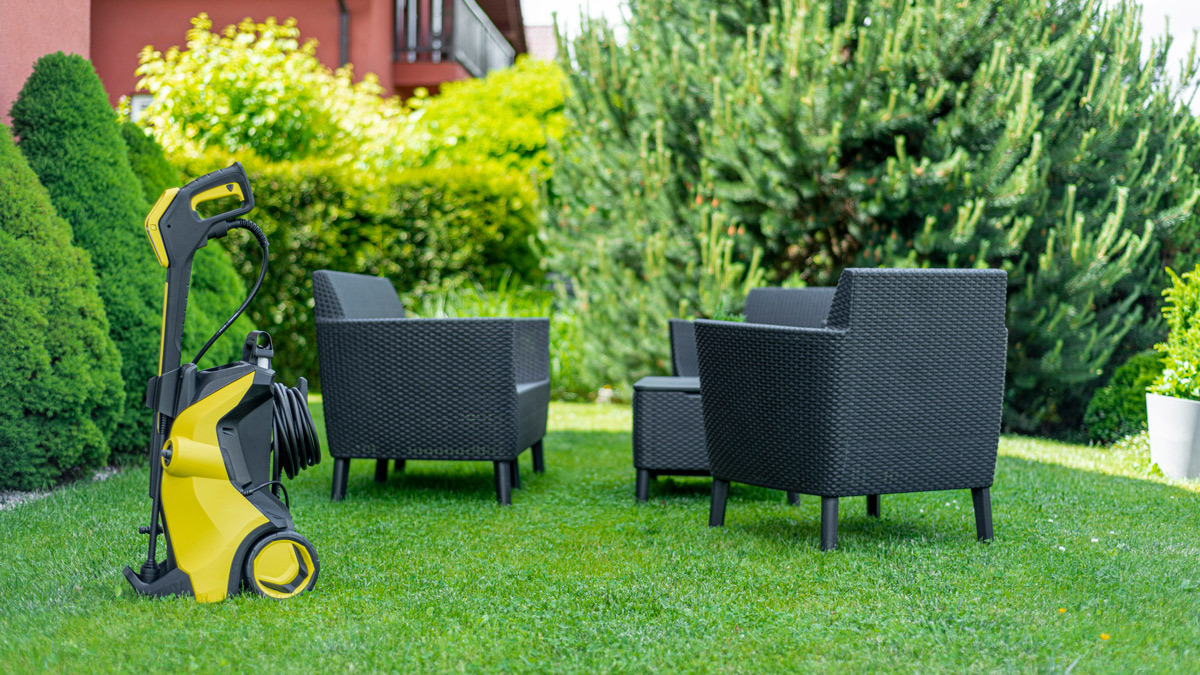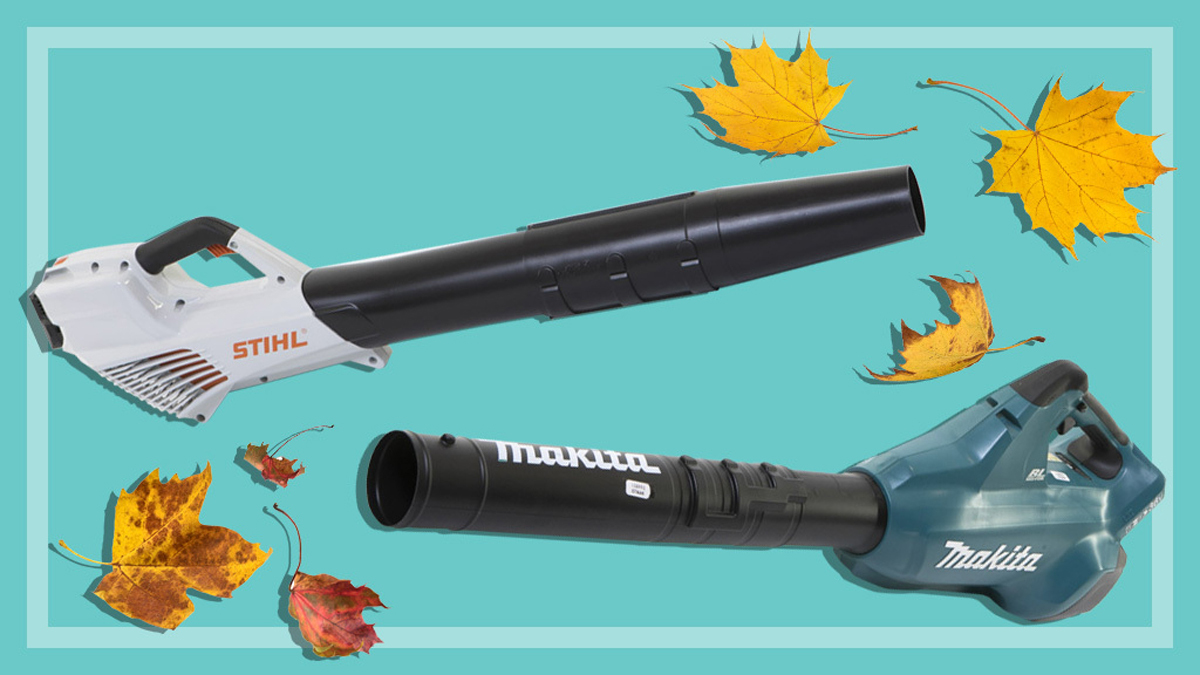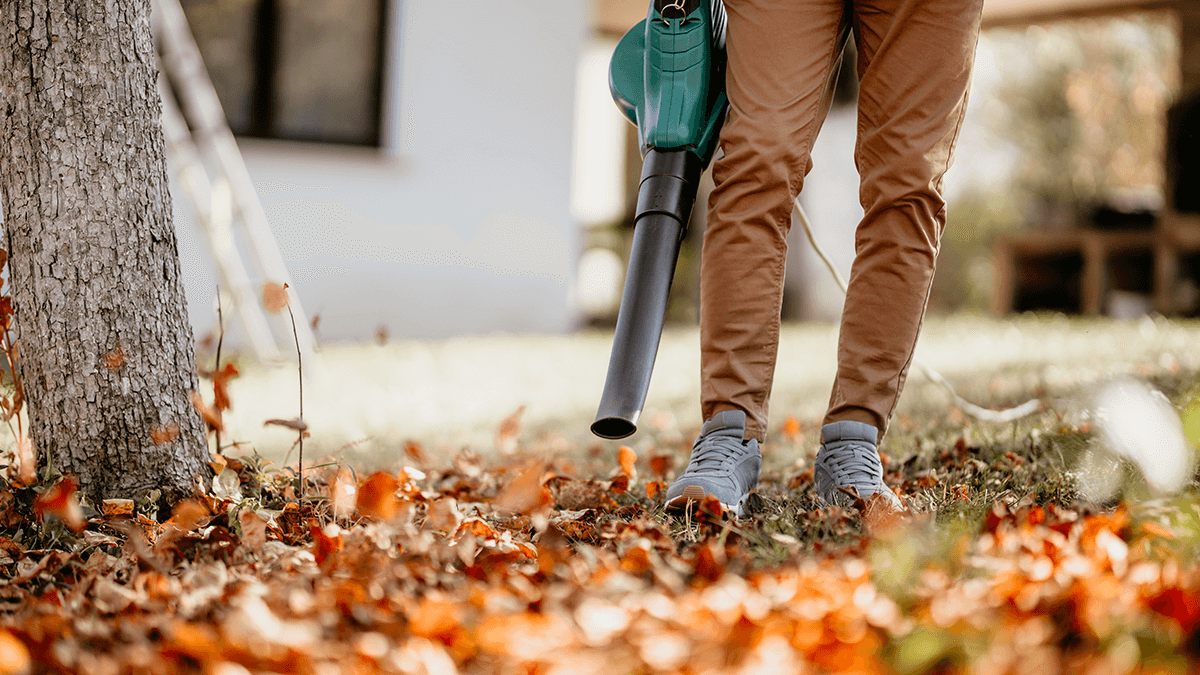Get our independent lab tests, expert reviews and honest advice.
How to buy the right lawnmower for your yard
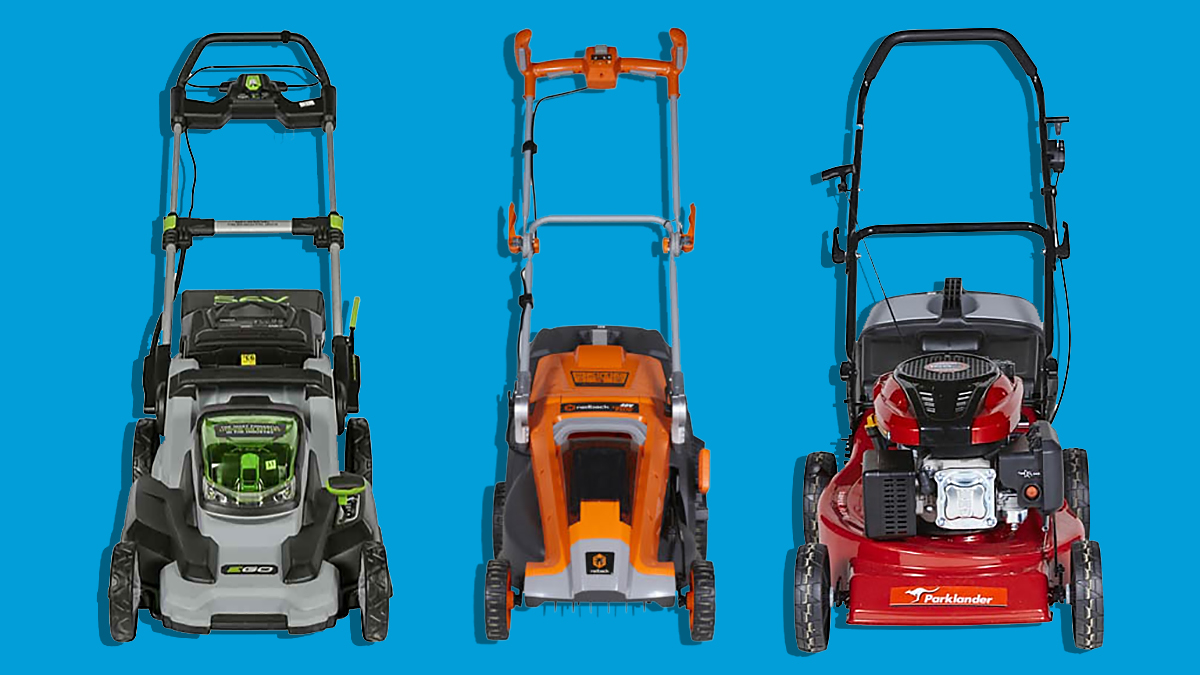
Battery (cordless) lawnmowers have improved substantially over the years, making them a good choice for many homes. But petrol and electric models have their own advantages too. We help you decide whether to go the petrol, electric or battery route to keep your lawn well groomed.
On this page:
- Lawnmower types: Petrol, battery (cordless) and electric
- Are battery mowers more eco-friendly?
- What size cutting diameter does your lawnmower need?
- Battery technology is improving
- Two-stroke vs four-stroke petrol lawnmowers
- How much do lawnmowers cost?
- What features should you look for in a lawnmower?
- Australia's best lawnmower brand
- Australia's most reliable lawnmower brand
Lawnmower types: Petrol, battery (cordless) and electric
Petrol lawnmowers
Compared to electric- and battery-powered models, petrol lawnmowers can be a hassle to start and refuel. The cost to the local environment with fumes and noise may also be an issue. But the petrol mowers we’ve tested over the years are usually excellent grass cutters and quick to refuel, so they’re a good option for mowing big areas of grass.
Battery (cordless) lawnmowers
For a small or medium lawn typical of a suburban home (up to about 500 square metres), one of the top-performing battery mowers is probably a better choice – they’re very capable machines, and you skip the need to store petrol.
The batteries are usually compatible across a range of power tools from the same brand, which is very convenient if you also have a line trimmer, brush cutter or power drill. And of course there are no petrol exhaust fumes to worry about. But you do need to remember to charge the batteries ahead of time.
The more the battery life improves, the bigger the area you’ll be able to mow. Some hold enough charge for 1500 square metres or more, though if you’ve got spare batteries and/or a fast charger to hand, you’ll be able to mow all day, just like you would with a petrol mower.
Electric lawnmowers
If you don’t mind the minor hassle of dragging a cord around and you have a power point close by, then an electric lawnmower is easy to run and maintain. Make sure to use a suitable outdoor-rated extension cord plugged into a safety switch, which will shut off the power immediately if you accidentally damage the power cord.
Are battery mowers more eco-friendly?
While petrol mowers are usually very good performers, their major negative point is the air pollution they emit. Even a modern four-stroke mower engine running on unleaded petrol can put out far more pollution than you might expect.
A 2023 American study found that, in total, petrol-powered lawn and garden equipment in the USA contributes huge amounts of pollution into the atmosphere, including carbon dioxide, methane, fine particulate matter, nitrous oxides, volatile organic compounds such as formaldehyde, and other toxic and cancer-causing chemicals. In the case of nitrous oxides, the yearly emissions are the equivalent of fumes from 30 million cars.
Small mower engines don’t generally have as sophisticated pollution control as car engines, and of course the mower produces its pollution right where you, the user, will breathe it in.
Batteries for the win?
The major advantage of battery mowers is that they produce no air pollution while you’re using them; that’s healthier for you and for your neighbourhood. They also tend to be noticeably quieter: another win.
But they don’t get a free pass on the environmental front. Downsides include the following.
- Lithium batteries have some environmental impact at their manufacturing stage (though so does petrol, of course).
- While lithium batteries can be recycled and much of the lithium and other materials can be reused, in Australia at present only about 10% of such batteries end up actually being recycled, as there aren’t many waste facilities able to process them. Most batteries end up in warehouses or scrapyards waiting for recycling, and these stockpiles can pose fire and environmental hazards. Even so, you should still dispose of dead batteries through battery or e-waste collection schemes, to avoid them going to landfill.
- In many homes, when the battery is recharged, it will be with electricity from the grid, and often that’s from fossil fuel power plants. Where possible, a greener option would be to use your own solar power, or at least a Greenpower energy plan.
Despite those caveats, battery lawnmowers are generally a much more environmentally friendly option than a petrol mower. And they are usually easier to use as well.
What size cutting diameter does your lawnmower need?
A lawnmower with a wide cutting diameter means you’ll spend less time mowing the lawn and more time enjoying your weekend.
Petrol lawnmowers commonly have a wide cutting diameter of 45–50cm.
Electric and battery-powered models are more commonly available with cutting widths from 30–40cm.
A difference of 10 or 20cm may not seem to be significant, but large lawn-owners will definitely notice if you have to make a dozen more runs for each mowing session. If you have a smallish inner-city lawn, the difference probably won’t worry you.
Battery technology is improving
If you looked at battery-powered mowers 10 years ago and dismissed them as useless, you might have been right. But improvements in cutting performance and battery life have been significant, and battery-powered options have been well worth a look for a few years now.
You get the low-maintenance advantages of an electric mower without having to drag the cord around.
In our reviews, we find the battery gives typically about 45 minutes of mowing, which is usually more than enough for a typical suburban yard. But they can range from under 20 minutes to well over an hour, so make sure to check the results of our lawnmower test to find one capable of covering your home yard size.
Remember to charge the battery well before mowing (doing it the night before is a good idea), as it can take two or three hours to get the battery up to full power. That said, charge times are improving and you can buy spare batteries as backups, though they don’t always come cheap.
The lawnmowers we test often have at least 36V battery voltage (often running 2x 18V batteries on the one unit). How long the batteries last in a mowing session depends on a number of factors besides the battery, including the quality of the blades and how long the grass is.
Most battery mowers have removable batteries, making it easier to swap out a spent battery for a fully-charged one, or to trade up to a new battery with a bigger capacity. A few have built-in batteries, which keeps things simple but offers less flexibility.
But there’s still a downside
All lithium-ion batteries lose their ability to hold charge over time. We’ve had at least one report that within four years, a lawnmower battery had dropped to half the running time it originally had when at full charge.
And after a few years, a manufacturer might discontinue a product and no longer offer a replacement battery. That might leave you with a perfectly good mower but no compatible batteries – probably unlikely with a major brand, but it could happen with a one-off model or a cheapie brand that drops out of the market.
Unfortunately you might not be able to use a battery from another brand, as manufacturers aren’t collaborating to create any battery standard that would allow you to switch batteries between brands. But you might be able to find an after-market or generic battery that will work.
With petrol mowers, you can be assured petrol will be around for a while longer, though in the long term, petrol prices and pollution regulations will probably work against them.
Video: Petrol vs battery (cordless) lawnmowers
Two-stroke vs four-stroke petrol lawnmowers
Small petrol engines are generally either two-stroke or four-stroke.
Two-stroke engines are simpler in design, have fewer moving parts and are more powerful than the equivalent capacity four-stroke, so they can be both compact and reliable.
However, typical two-stroke engines produce a great deal more pollution because they require a mix of petrol and oil, which you’ll need to mix yourself to the required fuel/oil ratio.
Four-stroke engines, while more complicated, run on ordinary unleaded petrol and so produce a lot less pollution.
Almost all petrol mowers currently sold in Australia have four-stroke engines. An emissions law passed in September 2017 will phase out the sale of two-stroke lawnmowers entirely, due to concerns about their environmental and health impacts. Two-stroke engines will continue to be allowed in smaller power equipment such as line trimmers and chainsaws, as long as they meet emissions standards for those products.
If you’ve got a beloved old two-stroke mower in your shed, you’ll be able to keep it and use it. But new two-stroke mowers won’t be found.
How much do lawnmowers cost?
The models in our most recent battery and electric lawnmower test range in price from about $200 to over $1500, including the battery and charger. Battery lawnmowers are usually sold as a kit (including mower, battery and charger) but you can buy them as a “skin” only (i.e. just the mower – the battery and charger are sold separately). Make sure to check what’s included in the price.
Petrol lawnmowers range in price from about $200 to over $2000.
What features should you look for in a lawnmower?
Ease of use
- The handle should be comfortable to hold and preferably height-adjustable.
- A turned-up handle is easier on your wrists and gives better control over the lawnmower.
- Major controls should be close to hand and easy to see.
- The engine control lever should be on the handlebar for easy access and you should be able to operate it without too much effort.
- Make sure the cutting height is easily adjustable and you have several positions available. Minimum cutting height varies, but one of the battery models we tested can only cut to 35mm at its lowest point. If you want anything shorter than that you’ll need to shop around or go for a petrol model.
- It’s generally easier to start a petrol-powered mower when the pull cord is located on the engine, but a handle-mounted cord is good if you can’t easily bend over – make sure it’s not mounted too high, as this can require a lot of shoulder strength to pull.
- Push button or key ignition models don’t require any strength or dexterity to start so they’re even easier to operate.
- The mower should be easy to push and manoeuvre in all the conditions you’ll use it.
- Big wheels improve handling on rough ground and a lightweight model is easier to push and turn, particularly on uneven ground.
- Self-propelled models are all easy to push, as they do it themselves.
- We find that rigid plastic catchers are best. With a cloth bag type catcher, you can get showered in dust. The catcher should have two handles to make it easier to carry and empty.
- For battery models, a safety key which prevents the mower from starting unexpectedly when removed is a good feature, particularly if you have young, curious children.
- Most battery mowers have batteries which can be removed for charging. This means if you have spare batteries you can swap them over and keep mowing when you run out of charge.
Mulcher vs catcher mowing
Mulching mowers produce more of a compost than a mulch, using a special ‘mulching plug’ to repeatedly feed the cut grass through the blades, chopping it very finely before forcing the clippings down between the blades of grass and back into the lawn.
A good mulcher mower will make your lawn look neat and tidy and you shouldn’t be able to see clumps of clippings or unmown grass after you’ve finished.

Australia’s best lawnmower brand
So which brand of lawnmower should you buy? We identify the best lawnmower brand based on our test results for dozens of petrol and battery lawnmowers over the years and feedback from our members on satisfaction and reliability.
Best lawnmower brand 2025: Honda
Honda lawnmowers have performed consistently well over many years of CHOICE reviews, typically achieving very good scores in our tests – on average, Honda mowers score 80% overall. Among lawnmower brands, Honda had the highest customer satisfaction score (89%) in our most recent member survey, and an excellent brand reliability score (90%) as well.
The runner-up for Best Brand is Masport, whose lawnmowers have also typically performed very well in our reviews. This brand has above average reliability (86%) and satisfaction (85%) scores.
Best lawnmower brand 2025 scores
- Honda – 80%
- Masport – 77%
The other brands fell short in at least one area, such as having below-average brand reliability or test scores, making them ineligible for the title of Best Brand.
It’s important to note that the performance of specific models may vary quite significantly, so don’t assume that one brand’s products are the best across the many different features, functions and price points.
For comprehensive details on every lawnmower we’ve tested (and to find out which models we recommend), check out our petrol lawnmower reviews or battery lawnmower reviews.
The Best Brand recommendation for lawnmowers is based on our test results for lawnmowers over the past five years, as well as customer satisfaction and reliability information submitted by CHOICE members on their experience with the brand.
The recommendation is given to companies with a clear lead over their competitors during the test period, and no more than two recommendations are given during each period.
Best Brand eligibility is tough – to be considered, we must have tested a minimum of five models, and a brand must have received a minimum of 50 responses to the CHOICE member survey. Additionally, brands must score a minimum of 60% and be above the average score for average test score, reliability and satisfaction for consideration.
The following criteria determines the Best Brand recommendation.
- Average test score – 40%
- Brand reliability – 30%
- Customer satisfaction – 20%
- Recommended ratio – 10%
Average test score
This is an average of the CHOICE Expert Rating (our overall score) for all the brand’s models that we tested.
Catcher mowers
- Cutting score (50%) – A measure of performance cutting short- and medium-length grass with a catcher, and long grass without a catcher. We also rate the appearance of the grass after the short- and medium-grass tests.
- Ease of use (50%) – A measure of vibration through the handle bar, ease of pushing and manoeuvring, handle comfort, convenience of controls, ease of adjusting the cutting height, catcher convenience, and power source.
Mulcher mowers
- Cutting score (25%) – A measure of performance cutting short- and medium-length grass with a catcher, and long grass without a catcher. We also rate the appearance of the grass after the short- and medium-grass tests.
- Mulching score (25%) – For the mowers that have a mulcher mode, our tester cuts short- and medium-length grass and assesses the appearance of the lawn after the short- and medium-grass cutting tests. This is part of the overall score for these models.
- Ease of use (50%) – A measure of vibration through the handle bar, ease of pushing and manoeuvring, handle comfort, convenience of controls, ease of adjusting the cutting height, catcher convenience, and power source.
For more details, see how we test lawnmowers.
Brand reliability
Our most recent survey on lawnmower reliability had over 1700 responses – we asked consumers whether they’ve run into any problems with their lawnmower in the previous 12 months.
Customer satisfaction
Our survey asks how satisfied members are with their lawnmower. So even if a lawnmower has a fault after six months, it’s still possible for it to have a high satisfaction score – perhaps the company has customer service that goes beyond expectations, or the product is simply too good, despite some performance quirks.
Recommended ratio
This calculates the percentage of lawnmowers that CHOICE recommends for each brand. The greater number of models that earn a recommendation, the higher the recommended ratio score.
Recommended models
This shows the number of petrol mowers that earned a CHOICE Expert Rating of at least 85% and at least 75% for ease of use, and battery mowers that earned a CHOICE Expert Rating of at least 80% and at least 80% for ease of use.
Best lawnmower brand 2025: Honda
Average test score
Honda: 83%
Masport: 82%
EGO: 89%
Victa: 85%
Ryobi: 83%
Husqvarna: 81%
Ozito: 79%
Rover: 82%
Reliability score
Honda: 90%
Masport: 86%
EGO: 83%
Victa: 83%
Ryobi: 81%
Husqvarna: 79%
Ozito: 95%
Rover: 78%
Satisfaction score
Honda: 89%
Masport: 85%
EGO: 88%
Victa: 83%
Ryobi: 81%
Husqvarna: 81%
Ozito: 78%
Rover: 79%
Recommended ratio
Honda: 20%
Masport: 15%
EGO: 86%
Victa: 36%
Ryobi: 45%
Husqvarna: 22%
Ozito: 0%
Rover: 20%
Models tested
Honda: 15
Masport: 13
EGO: 7
Victa: 22
Ryobi: 11
Husqvarna: 9
Ozito: 5
Rover: 10
Recommended models
Honda: 3
Masport: 2
EGO: 6
Victa: 8
Ryobi: 5
Husqvarna: 2
Ozito: 0
Rover: 2
Australia’s most reliable lawnmower brand
Our CHOICE Product Reliability Survey asks thousands of members about the appliances they own, what they think of them, and how well they’ve held up over time. The information they provide gives us a really good indication of how various lawnmower brands stack up over time – something we can’t test in our labs.
In our 2021 survey 7100 CHOICE members responded, and of these, 1734 respondents told us about their lawnmower.
The top performers
Most reliable brand: Ozito
Highest owner satisfaction: Honda
When considering brand reliability, it’s important to note that some brands tend to specialise in a certain type of lawnmower. For example, 91% of Honda models were petrol walk-behind lawnmowers, while 98% of EGO models were battery walk-behind lawnmowers.
Other brands were a mix – Husqvarna had 46% petrol ride-on and 37% petrol walk-behind lawnmowers, while Ozito had 50% corded electric walk-behind lawnmowers and 45% battery walk-behind lawnmowers.
What we found
- Ozito was the most reliable lawnmower brand, topping our table with a score of 95%.
- Honda owners reported the highest satisfaction with a score of 89%. EGO wasn’t far behind though, with a satisfaction score of 88%.
- Corded electric lawnmowers were the most reliable type, followed by walk-behind battery and petrol models. Ride-on mowers proved to be the least reliable.
Most reliable lawnmower brand: Ozito
Reliability score
Ozito: 95%
Honda: 90%
Masport: 86%
EGO: 83%
Victa: 83%
Ryobi: 81%
Husqvarna: 79%
Rover: 78%
Customer satisfaction score
Ozito: 78%
Honda: 89%
Masport: 85%
EGO: 88%
Victa: 83%
Ryobi: 81%
Husqvarna: 81%
Rover: 79%
Main problems
In the past eight years, 66% of our lawnmower owners said their machines had no problems or faults. The main problems reported among those who did face issues were:
- difficulty starting the lawnmower (6%)
- the lawnmower not cutting grass well (6%)
- worn out or damaged spark plugs (4%).
Ozito achieved the highest reliability score. People who own an Ozito battery walk-behind lawnmower like the lightness and ease of use, but some said it doesn’t handle thick, long or wet grass well.
When it comes to satisfaction, Honda achieved a higher score than Ozito. Honda also had a higher satisfaction score than Aldi, Rover, Ryobi and Victa. With the vast majority of Honda lawnmowers being petrol walk-behind models, reliability and being easy to start were mentioned repeatedly as good points. There were also compliments that it’s a robust, quality build, but some people mentioned that it’s heavy.
In total, 7100 CHOICE members participated in our 2021 Product Reliability Survey. Of these, 1734 respondents told us about their lawnmower.
Reliability
Our reliability figures are based on owner assessment, not test data. We use the data we collect from CHOICE members to rate the most popular brands for reliability. We ask owners if their product has broken down in the past 12 months, and we take into account the age of the products so we can compare brands in a fair way.
Owner satisfaction
We ask owners to tell us what they think of the products they own, rating them from ‘Excellent’ to ‘Terrible’. We’ve used this information to give each brand an owner satisfaction rating so you can see what people who use these brands each day think of them.
Our brand reliability scores help guide you when choosing a product, letting you know that the brand is well regarded by CHOICE members for customer satisfaction and reliability.

